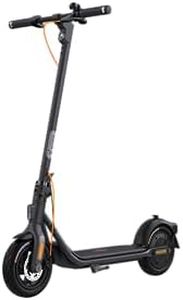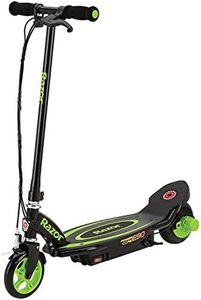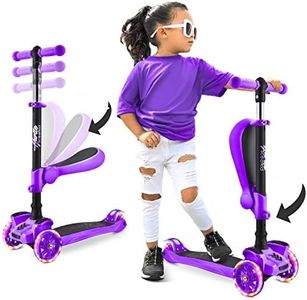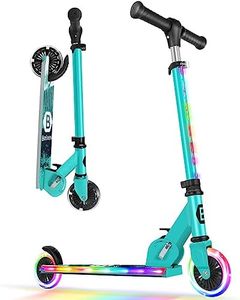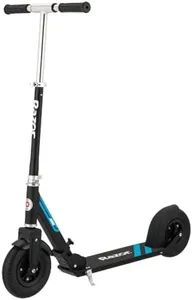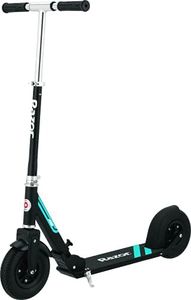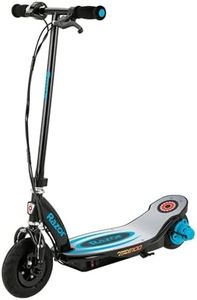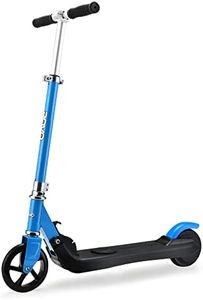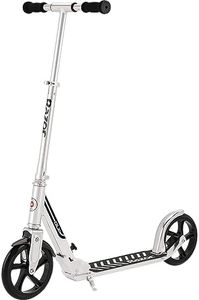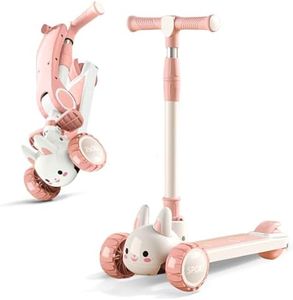We Use CookiesWe use cookies to enhance the security, performance,
functionality and for analytical and promotional activities. By continuing to browse this site you
are agreeing to our privacy policy
10 Best Electric Scooters For Kids
From leading brands and best sellers available on the web.Buying Guide for the Best Electric Scooters For Kids
When choosing an electric scooter for kids, it's important to focus on safety, ease of use, and matching the features to the child's age and ability. Electric scooters come in various shapes and power levels, and understanding the key features will help ensure you pick one that's appropriate, enjoyable, and safe for your child. Always consider the user manual's age recommendations and local regulations regarding electric scooters for children.Maximum SpeedMaximum speed is the highest rate at which the scooter can travel. For kids, this is crucial for safety as well as for confidence. Lower speeds (around 6-8 mph) are ideal for younger children or first-time riders, offering a gentle introduction to electric scootering. Slightly higher speeds (up to 10-12 mph) might suit older or more experienced kids. Parents should consider their child’s maturity, balance, and local space for riding when choosing a suitable speed.
Weight LimitThe weight limit tells you how much the scooter can safely support. This includes the child and anything they might carry. For safety and performance, it's best to choose a scooter with a weight limit a bit higher than your child’s current weight, ensuring that the scooter can be used for a couple of years as they grow. Going over the limit can damage the scooter or cause it to perform poorly, so matching this to your child’s current and near-future size is key.
Battery Life and RangeBattery life and range describe how long the scooter can travel on a single charge before it needs recharging. Shorter battery lives (about 30-45 minutes or up to 5-6 miles) are common and enough for quick play sessions; longer ranges let kids go further or ride longer between charges. Pick a range that fits your child’s typical usage: shorter trips for quick play might only need modest battery life, but for longer park excursions or longer commutes, more range is better.
Weight of the ScooterThe scooter’s weight affects how easily a child can handle, carry, or store it. Lighter scooters (under 25 pounds) are easier for younger kids to maneuver and transport, while heavier models might offer sturdier builds for older or bigger kids. Consider where the scooter will be stored, how it will be transported, and whether your child will need to move it on their own.
Braking SystemThe braking system determines how quickly and safely a child can stop the scooter. Foot brakes are simple and common on basic models; hand-operated brakes give more precise control and can be easier for older kids. For very young or beginner riders, basic and familiar brakes can prevent confusion, while older or more confident riders might appreciate features like disc brakes or regenerative systems.
Wheel Size and MaterialWheel size and material impact ride comfort and safety. Smaller, solid wheels are common on lightweight models and are suited to smooth surfaces, while larger or air-filled wheels offer smoother rides over bumps and uneven ground. If your child will ride mainly on sidewalks or paved paths, smaller solid wheels suffice. For varied terrain, larger wheels or those with suspension may be better.
Adjustable Handlebar HeightAn adjustable handlebar allows the scooter to grow with your child, ensuring comfort and safe control. Fixed handlebars are suitable if you want a simple option, but adjustable ones are best for children who are still growing or if you want the scooter to fit multiple kids.
